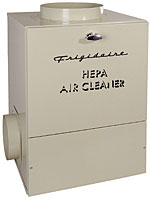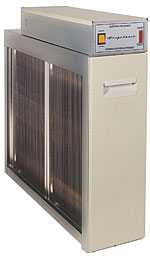Homeowners might not be aware of several products that can help them achieve a comfortable and safe indoor environment, but once consumers understand their benefits, these products can become sales success stories.
This is a brief rundown of some of the products that are available, and a brief description of what each is designed to do. It is recommended that contractors contact their local dealer or distributor to obtain more information on the product options available in their local markets.

Filter Choices
Studies conducted by the Environmental Protection Agency (EPA) indicate that levels of indoor pollutants may be two to five times higher, and occasionally more than 100 times higher, than outdoor levels. Acceptable indoor air quality (IAQ) is considered to be air in which there are no known contaminants at harmful concentrations.According to the EPA, the three most frequent causes of poor IAQ are:
1. Inadequate design and/or maintenance of the HVAC system.
2. A shortage of fresh air.
3. Lack of humidity control.
Improvements in IAQ can be achieved, in part, through air cleaners. The three most common types of high-efficiency filtering systems available for residential applications are electronic, media, and electrostatic air cleaners.
Electronic air cleaners usually have a mesh-type prefilter designed to catch most large particles. Media air cleaners generally consist of a pleated material with a surface area many times greater than that of a standard furnace filter.
With an electrostatic air cleaner, as particles move across a series of mesh elements (usually plastic), the static electricity caused by this friction charges the particles and traps them inside the element.
When considering a high-efficiency filter, a contractor must make sure that the system is capable of handling the increased static pressure that would be placed on it by the new filtration system. The restriction of airflow by an enhanced filtration system might tap out the limit of a homeowner's existing system.

What About Humidity?
Humidity is a necessary component of indoor comfort. However, too much humidity can make homeowners feel hot and sticky on a sultry summer day and contribute to mold and mildew growth, while too little humidity can exacerbate allergy symptoms, cause electrostatic shocks, and leave homeowners feeling cold. A properly sized and installed whole-house humidifier can correct many of the problems associated with air that's too dry. It's important to choose the type of humidifier best suited to your customer's home.A flow-through bypass humidifier usually has no fan. It bypasses a portion of the forced air from the supply side of the furnace, forcing it across a media panel, exposing it to water. A flow-through power humidifier has a built-in fan, which pulls heated air directly from the hot air (supply) side of the furnace, pushes it across a media panel, where the warm air picks up humidity.
Drum humidifiers, on the other hand, are best suited for homes without a drain located near the heating-cooling equipment, or for homes in areas where water costs are relatively high. Other options include steam humidifiers, which are capable of independently operating the furnace blower motor to distribute humidified air when needed.
Consumers should be aware that a humidifier can help lower heating bills because humidified air feels warmer.

HRVs And ERVs
Other products to consider are heat recovery ventilators (HRVs) and/or energy recovery ventilators (ERVs). Both products reduce indoor air pollution in a home by exhausting stale indoor air and introducing fresh air from outdoors. While it does so, the HRV transfers heat from one airstream to the other, reducing energy costs.An ERV works in much the same way, except it transfers not only heat, but moisture as well. Heat and moisture are transferred from the airstream with the highest amount of heat and moisture to the airstream with the lowest amount of heat and moisture.
In the summertime, dehumidifying air in climates with higher humidity levels can prove to be a necessary component of providing a total comfort system. Generally speaking, HRVs are used most often in northern climates, while ERVs are more common in the South.

In The Zone
Zoning allows the home to be divided into separate spaces with the heating and air conditioning in each space controlled independently. There are three basic ways to zone your customer's home: a single system, multiple systems, and the combination of both. The benefits of zoning include:1. Even comfort throughout the home.
2. Control over individual rooms or areas.
3. Up to 30 percent savings on heating and cooling costs.
A zoned comfort system can quickly adapt to changing conditions within one area without affecting other areas. For example, it makes sense to zone a two-story home by floor. In many homes, for example, the second floor requires more cooling in the summer and less heat in the winter, while the first floor requires less cooling in summer and more heat in the winter.
Publication date: 06/27/2005


Report Abusive Comment